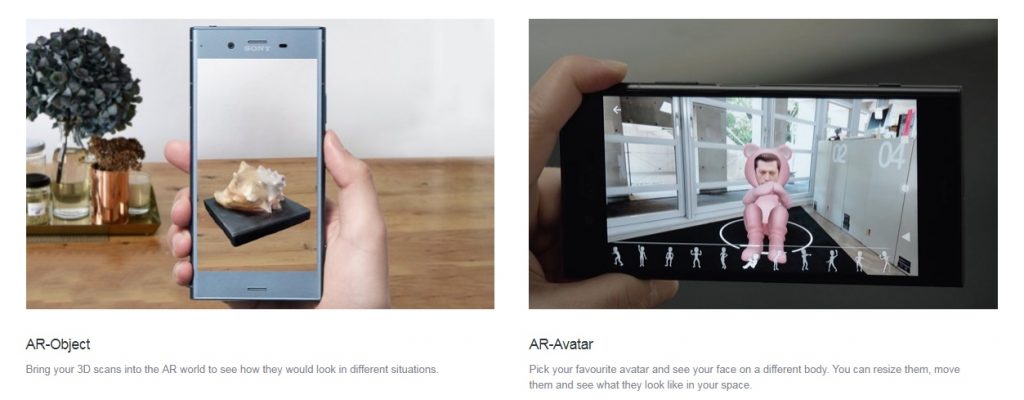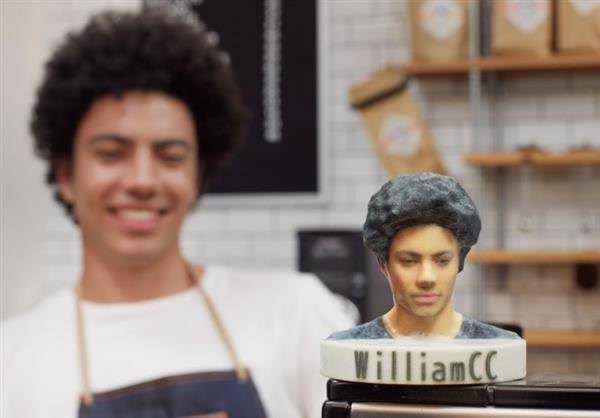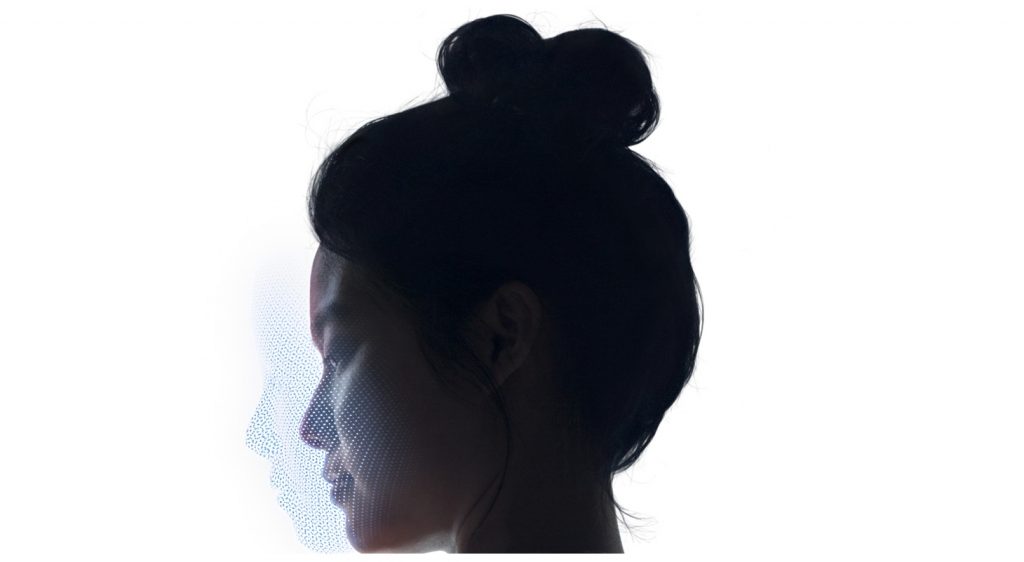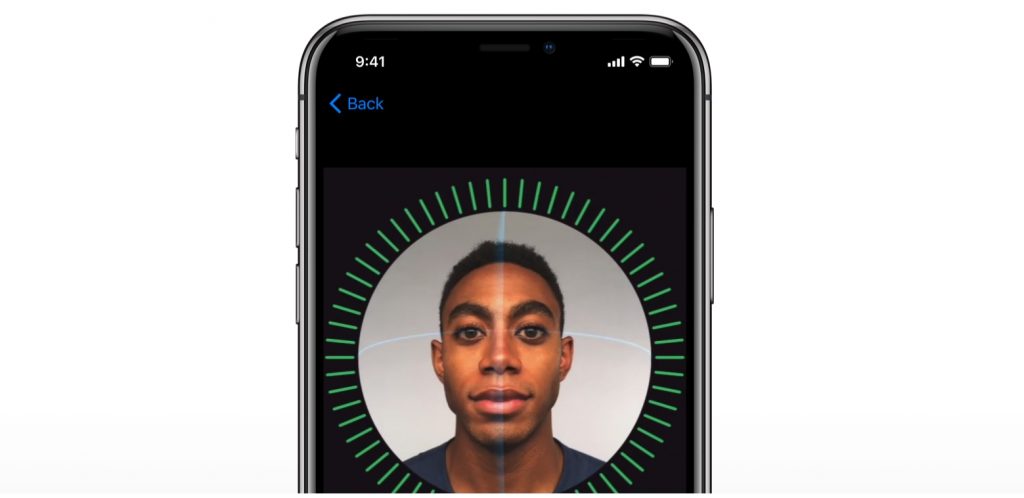After teasing integrated 3D scanning and 3D printing features in the lead up to launch Sony has released the Xperia XZ1 smartphone. Now Sony has revealed a partnership with French 3D printing service provider Sculpteo, integrating with the phone’s 3D Creator app.
Apple have also released a new phone, the iPhone X, with a number of 3D scanning facial recognition and augmented reality (AR) features, eerily reminiscent of an episode in Charlie Brooker’s satirical Black Mirror series.
Sharing the world in 3D
The Sony 3D Creator app allows Xperia XZ1 users to capture 3D images of faces/objects using the phone’s camera. These “3D photos” can then be turned into interactive avatars for photos and chats, or used in AR “to see how they would look in different situations” and shared on social media.

With the Scuplteo integration, 3D scans can also be 3D printed as full color models demonstrated by Sony in a gypsum-like material as used in 3D Systems binder jetting technology.
In 2016, Microsoft previously partnered with Materialise to allow users of the Builder3D app to order 3D prints of their creations.

The main camera on the Xperia XZ1 is 19 mega pixels, offering a distance between pixels (pixel pitch) of 1.22μm. It is capable of capturing slow motion video at 960 frames per second and has the “predictive capture” feature that recognizes smiles and motion. The front camera (“selfie camera”) by comparison is capable of capturing 13 mega pixels.
Pay, authenticate and unlock with FaceID
At $999+ the Apple iPhone X is the most expensive smartphone in history. To justify the cost, it comes installed with a number of features, the likes of which have been seen in sci-fi films.

FaceID is the facial recognition technology iPhone X owners can use to unlock their phone, authenticate updates and pay for things using Apple Pay.
The technology has been developed with depth perception intelligence, that maps more than 30,000 points on a person’s face to create an individual 3D image.
Additionally, the technology has been applied to the phone’s beloved emoji library, commemorated by the English Dictionary in 2015, allowing users to express feelings via 3D animations known as “Animojis.”

The fun, interactive facial recognition platform has however garnered Orwellian concern about the protection of personal information, much the same as the discussion surrounding the technology’s use in airports.
For us at 3D Printing Industry it will be interesting to see how the increased functionally of the mobile devices is embraced by app developers, specifically those developing software for use in the the 3D printing ecosystem.
We want to know your thoughts on the addition of AR and additional scanning functionality into smartphones. Is it useful? Does it have future potential? Let us know your thoughts in the comments below.
For more of the latest 3D technology releases and more, sign up to the 3D Printing Industry newsletter, like us on Facebook and follow us on Twitter.
Register for 3D printing job updates here.
Featured image shows the chicken Animoji reaching new levels of expression with the iPhone X’s facial recognition technology.



